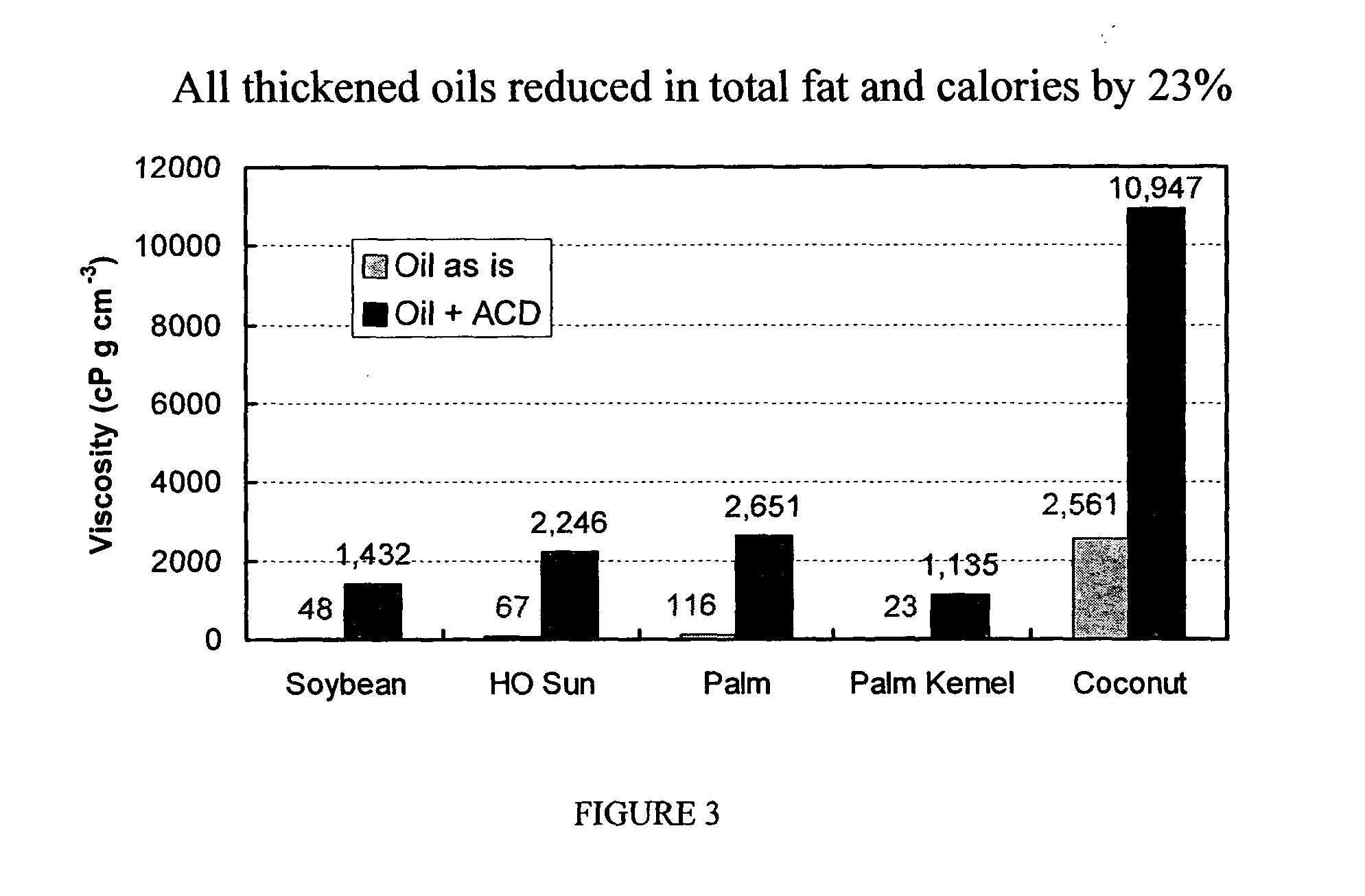Reduced trans fat product
a technology of trans fat and products, applied in the direction of lipidic food ingredients, food preparation, candle wicks, etc., can solve the problems of double bonding of unsaturated fatty acids, no safe amount of trans fat daily consumption, and detrimental to the general health and well-being of consumers, so as to achieve beneficial hypocholesterolemic and/or caloric properties, reduce the caloric content of food, and improve the effect of cholesterol
- Summary
- Abstract
- Description
- Claims
- Application Information
AI Technical Summary
Benefits of technology
Problems solved by technology
Method used
Image
Examples
example 1
[0054] In an exemplary embodiment of the present invention, a fat product, in this case a shortening, may be formulated. In this example, samples were prepared using about 5 to 20% of alpha-cyclodextrin by weight of the product.
ShorteningIngredientWeight PercentageOil*70%Water13%Alpha-cyclodextrin10%Emulsifier** 7%
*Oil may be composed of, but not limited to: soybean oil, high-oleic sunflower oil, high-linoleic soybean oil, palm oil, palm kernel oil or coconut oil.
**Emulsifier may be composed of but not limited to: fully hydrogenated soybean oil mono-, di-, or tri-glyceride; mono-, di-, or tri-stearate.
[0055] This example was prepared by first hydrating the cyclodextrin in the water. The cyclodextrin-water mixture was added slowly to the oil-emulsifier mixture with constant stirring. The complete mixture is allowed to continue to stir for an additional 10 to 30 minutes to allow complete thickening of the shortening product.
[0056] The shortening produced in this example is reduce...
example 2
[0059] In a still further exemplary embodiment of the present invention, a fat product, in this case shortening flakes, may be formulated. In this example, samples were prepared using about 15 to 50% of alpha-cyclodextrin by weight of the product.
Shortening FlakesIngredientWeight PercentageOil*62%Water**13%Alpha-cyclodextrin15%Emulsifier***10%
*Oil may be composed of, but not limited to: soybean oil, high-oleic sunflower oil, high-linoleic soybean oil, palm oil, palm kernel oil or coconut oil.
**Water may be removed from final product by freeze drying, dehydrating or evaporating the fat product.
**Emulsifier may be composed of but not limited to: fully hydrogenated soybean oil mono-, di-, or tri-glyceride; mono-, di-, or tri-stearate.
[0060] The shortening produced in accordance with the foregoing example is reduced in caloric content by 28% relative to the oil-emulsifier mixture and contains no significant levels of trans fat. Additionally, this shortening will be stabilized again...
PUM
 Login to View More
Login to View More Abstract
Description
Claims
Application Information
 Login to View More
Login to View More - R&D
- Intellectual Property
- Life Sciences
- Materials
- Tech Scout
- Unparalleled Data Quality
- Higher Quality Content
- 60% Fewer Hallucinations
Browse by: Latest US Patents, China's latest patents, Technical Efficacy Thesaurus, Application Domain, Technology Topic, Popular Technical Reports.
© 2025 PatSnap. All rights reserved.Legal|Privacy policy|Modern Slavery Act Transparency Statement|Sitemap|About US| Contact US: help@patsnap.com



